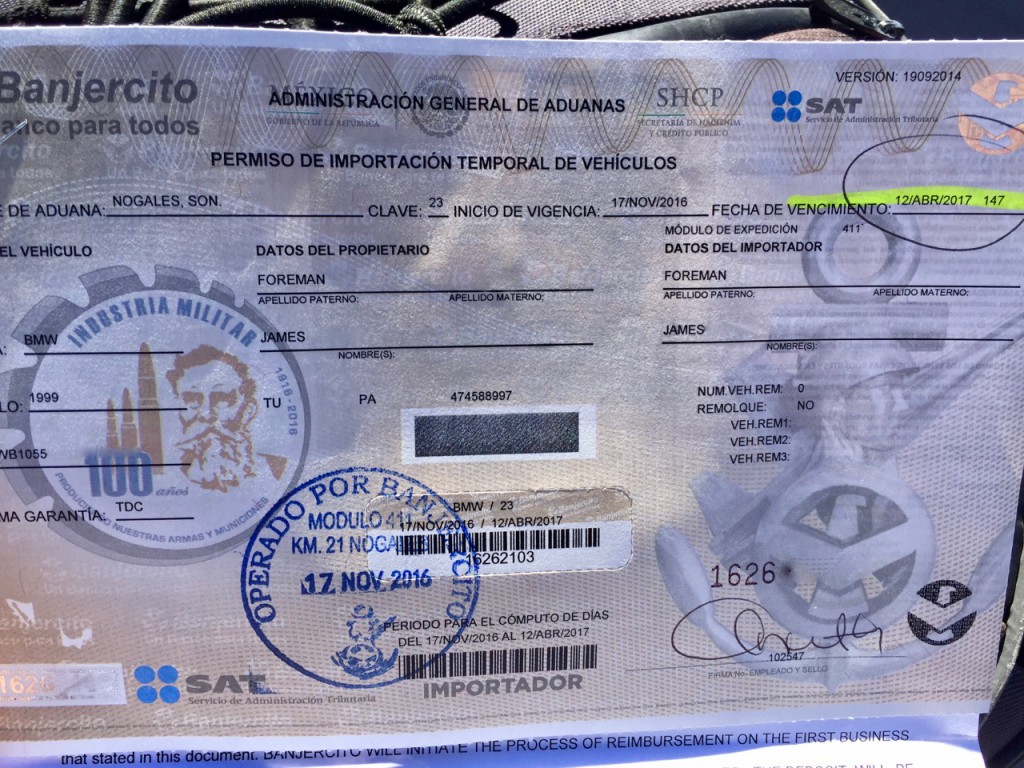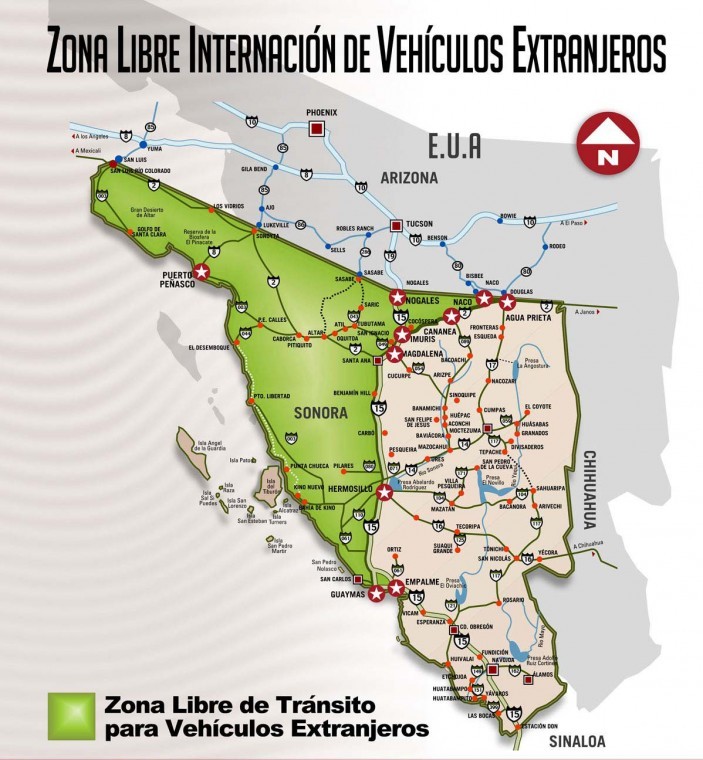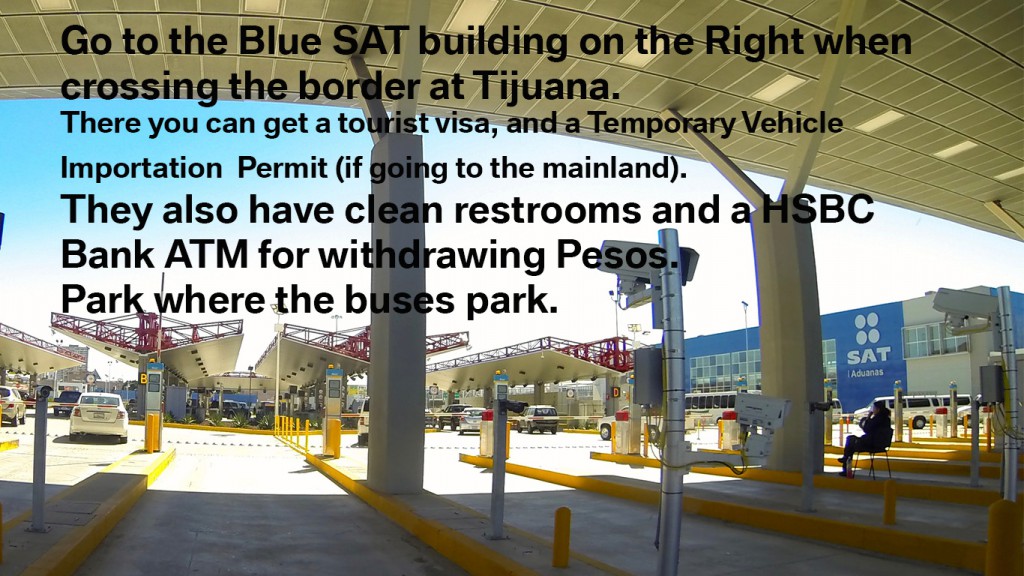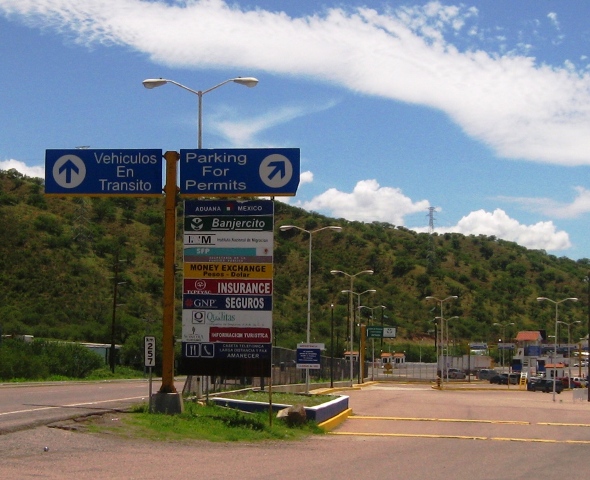Getting and Returning a TVIP
Getting and Returning a TVIP
Story by Jim Foreman
For many overland travelers in Mexico, finding the location to get and return a Temporary Vehicle Import Permit (TVIP or TIP) can be an infuriating ordeal.
Countless times we hear that from folks that at the border, they “Just waved us through.” In Mexico it is your responsibility to make sure you obtain your Tourist Visa and your TVIP. There’s recently been a time when a couple got all the way to Cancun from the northern border without realizing the peril they were in by not having one. Not having a valid TVIP can lead to confiscation at a checkpoint.
Who needs to get a TVIP? Anyone traveling in Mexico with a non-Mexico plated vehicle (USA, Canada, UK, Italy, etc.) needs a TVIP with a couple exceptions. It’s easier to list who doesn’t need a TVIP.
If you are traveling exclusively in Baja California (North and South) you do not need a TVIP. You will still need a tourist visa if you are staying longer than 72 hours. If you plan to take the Ferry to the mainland from La Paz, you will not be allowed to board without a TVIP. Fortunately, you can get one in Pichilingue (The port or La Paz) if you have a current tourist visa. If you do not have a tourist visa, you will need to drive back to Ensenada and get one.
Additionally, you do not need a TVIP if you are staying in the Sonora “Hassle-Free Zone.” That name is perfect. In Spanish, it would be called “Zona Sin Moleste.” Most travelers who don’t know any Spanish would probably try to interpret that as an invitation to sin and molestation for people who just crossed from Arizona. Take a look at the attached map to see if your travels are contained within the Sonora Hassle-Free Zone.
What do you need to get a TVIP? You need an original vehicle registration or title and Drivers Licence. Your name on the registration has to match your passport name. You will need cash or a credit card for the refundable deposit and fees. Finally, you need your tourist visa. Start the process by getting your FMM tourist visa.
Where do you get the Visa and TVIP? The answer varies. Also, in some cases, such as Tijuana, the place to get it is different from where you return it. In Tijuana, you can get your tourist visa and TVIP as you cross the Chaparral Border (the big one at the end of I-5 in San Ysidro). After you pass through the red light/green light gates, look to the right and the big blue building. Make a hard right as you clear the inspection areas and park where the buses park. Then walk through to the front and get your documents there.
How To Pay For The Deposit. When paying for the TVIP fees and refundable deposit, you have three payment choices. US Dollars, Mexican Pesos, or a Credit Card. Since the exchange rate of US Dollars to Mexican Pesos fluxuates, you may find your returned deposit to be a little less or more if you paid with Credit Card. If you pay with cash, you will be refunded back in US Dollars or in Mexican Pesos of the prescribed amount based on the year of your vehicle. It’s done all the time, but the exchange rate is not great. There are much worse exchange rates, but you’d probably be better off paying in Pesos if you insist on paying cash. Ideally, many think it’s best to pay with Credit Card. When you return your TVIP before its expiration, they issue a refund to your Credit Card that shows up within 1-4 days depending on your bank.
If you are bringing in two vehicles or towing a car or a trailer (yes, it needs a TVIP, too), pay for each one with different credit cards or pay one with cash and the other with Credit Card. Alternatively, cash for both deposits seems to be no issue, also. The Mexican system is good, but there can be issues if you try to pay for more than one TVIP with the same card upon return.
If you are traveling through Nogales, Sonora, Cd. Juarez, Chih (El Paso, Tx), or Piedras Negras, Coah (At Eagle Pass, north of Laredo) there is a set of buildings on the main highway between at 21KM, 30KM, and 53KM south of the border, open 24hrs where you can get and return your tourist visa and TVIP quickly and easily.
Unless it’s a small border crossing such as Tecate, BC or Agua Prieta, SON, the place to turn in the TVIP and receive your deposit back is not at the border crossing.
The general rule is that at every land border crossing, there is a Banjercito that will issue and accept returns of the TVIP. Sea crossings will also issue a TVIP if your vehicle is arriving from another country. If you are shipping a vehicle out of Mexico by sea, they will also accept the return of a TVIP. Pichilingue and Ensenda and are unique in that they will issue a TVIP to overland travelers intending to travel to the mainland because Baja California doesn’t require a TVIP.
If you’re thinking to blow off returning the TVIP, don’t! Mexico will treat you as if you sold your vehicle in Mexico and assess penalties and fines exceeding over half of what Mexico thinks your car is valued at. It is a difficult process convincing the Aduana (Mexico’s tax collection agency) that you did not sell your car. You will also forfeit your deposit and not be allowed to temporarily import another car until you get a new passport with a new passport number.
The Mexican Government publishes a list of all the banjercito locations that will issue a TVIP. It’s a great document to download and save on your phone for easy reference.
Fortunately, the locations don’t change that often, so an older list is usually fine.
At the bottom of the list are US cities. You can obtain a TVIP at those locations, but you MUST return the TVIP within Mexico. It’s not advised that you try to get your TVIP at one of these locations or online as it puts you in a bit of peril if anything happens to your vehicle such as being stolen or totaled in a wreck. Mexico will still think you have sold the vehicle in Mexico and it’ll be up to you to peel back the layers of bureaucracy in clearing your name and getting your deposit back.
Besides your tourist visa and TVIP, all you need to travel with your car in Mexico is your passport and quality Mexican Insurance coverage. The best place to shop, buy and print Mexican car insurance policies is Mexican Insurance Store.






13 Comments. Leave new
Just curious! Why is Mexico a more preferred location for young people, especially college students?
Legal Drinking age in Mexico is 18 and up, and the beer is cheap, last time I was in Mazatlan, the price of beer in a fine hotel was $1.50 US, right there by the swimming pool.
In Mexico you are required to present proof of financial responsibility in any accident and Mexican insurance acts as proof for this.
This is correct.
Lots of students who want some fun under the sun choose Mexico to be their place of spring break. There are many stunning beaches that are irresistible to young people.
To avoid breaking Mexico insurance law, at least at the very minimum, you must have liability coverage.
Once all stuffs are packed and prepared, going to Mexico border with a pet would definitely add comfort and warmth to your trip.
Have your IPTV before travelling in Mexico. Such will help avoid impoundment and fines to your vehicles.
Planning to drive to see Mexico is not difficult in the first place. But to avoid chaotic hassles always have valid Mexico insurance coverage.
You can hit the road anytime and enjoy driving — provided your Mexico insurance is new and valid.
Mexico is so proud of its economy.
Cancun Mexico is one of the most-visited destinations in Mexico. Beaches are awesome with lots of water activities to indulge in.
When I read news or stories, I pay attention to quality. Fake stories usually have spelling errors and dramatic punctuations, but credible sources regard grammatical standards and quality proofreading.